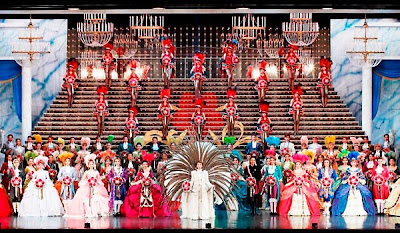Taking a deeper look at the Portland Japanese Garden
The Portland Japanese Garden is considered one of the best outside of Japan. It may not have the age of the real thing, but the design really captures the spirit of Japanese aesthetics. For me, the appeal lies in the tiny, narrow paths that wander by Japanese maples, old stone lanterns and tiny creeks. I love the way the small trails make you feel as though you're the only one in the garden.
One of the most important characteristics of a Japanese garden is that it mimic nature, but in an idealized way. Everywhere you look as you walk through you will see a picture perfect, beautifully designed landscape. Unlike Western gardens which tend to follow geometric patterns and offer a very controlled natural setting, a Japanese garden tries to hide its control over nature. Though carefully planned and manicured, everything appears to have grown naturally.
If you're familiar with Feng Shui, you will also see its influence over the design. One of the basic concepts of Feng Shui is that the natural elements can be broken into four parts, represented by the four animal gods of Chinese mythology. You can see them represented via natural elements (a hill, water source, etc.) and placed according to the cardinal directions. If you're curious, check out this page for more info. (The page discusses land surrounding a home, but many of the same rules are true for a garden.) Also, the concept of meandering rather than direct paths is borrowed from Feng Shui.
Japan scholar and translator, Donald Keene, identified four aspects of Japanese aesthetics. For anyone interested in gaining a deeper understanding of Japanese culture through its art, they're a good starting point. The four aspects are: suggestion, irregularity, simplicity and perishability.
Suggestion is one of the most important of the four. For me, suggestion and simplicity are the two that when I see represented in art, make me think: "this is so Japanese." Suggestion is about the abstract, implied nature of art. A Noh play or an ink painting would be good examples of this. You can also see it in the Zen Garden. Carefully raked white sand surrounds several tall, asymmetrically placed rocks in a white-walled enclosure meant to represent the ocean. It invites the eye to imagine in the raked sand the movement and color of waves.
The Japanese love of asymmetry is pretty unique to their culture. You can see it all through the garden; the asymmetrical placement of plants and other elements is what gives the landscape a feeling of movement. When you look at it, your eyes travel in circular motions, rather than the angular lines of a western garden.
 |
| Photo by David M Cobb, taken from here. |
 |
| Example of a Jizou statue, which I saw in Japan. |







You know I've never been to the Japanese Garden. I've always meant to but I guess I just never got around to it. Maybe a goal this year eh?!
ReplyDeleteYou should go! But if you do, make sure you go when it's not busy- like a weekday morning. The paths are small, so it feels crowded even if there's only a few people.
ReplyDelete